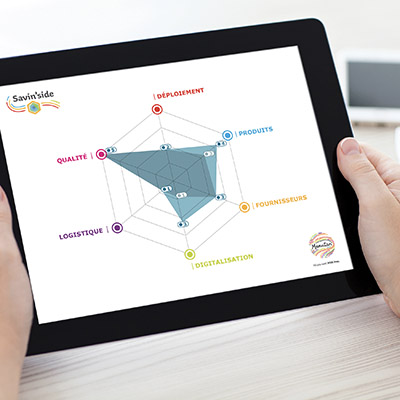The current situation, dominated by the health crisis but also by considerable pressure on supplies, has exacerbated the importance of good supplier risk management in manufacturing. This major challenge reinforces the strategic role of the procurement department in contributing to the success and performance of the company. In this context, the objective is to ensure the security of supplies in all circumstances, while controlling costs.
In addition to selecting quality suppliers and ensuring that their contracts are properly executed, sound supplier risk management is above all based on forecasting. Early identification of the risks to your supply helps you to prevent potential stockouts, but also to gain a better understanding of the tensions likely to impact the smooth running of the supply chain. It is, therefore, important for the procurement function to monitor and establish a precise and exhaustive map of supplier risks, regardless of their tier in the supply chain.
Create an integrated and segmented supplier database
Firstly, supplier risk management requires that all information relating to procurement is integrated across the company's operational systems, in real time.
This highly strategic database must then be segmented into different risk categories related to your suppliers. It is the condition for its effectiveness. This includes financial, contractual, business and technical risks, as well as CSR (Corporate Social Responsibility) risks that could affect your image, your business and your performance. In addition, there may be geopolitical, meteorological or climate threats depending on the country where your suppliers are located. The more precise the categorisation of supplier risks, the easier it will be for procurement departments to anticipate them. Your predictive analysis capacity and the operational management of your supplies will be considerably improved. You will thus be able to develop alternative strategies very early on to overcome any unforeseen events.
Of course, to be truly efficient, such a database needs to be regularly updated. By definition, supplier risks do not constitute intangible data. They vary according to the circumstances and must, therefore, be continuously updated within the company.
Promote exchange and transparency with your suppliers
To be as reliable as it is comprehensive, a good map of supplier risks also depends on the quality of the relationship you have with them. The more it is based on trust and transparency, the more it will enhance your ability to make predictions. The richness of the exchange and the quality of the human relationship remain essential from this point of view. As Grégoire Koudrine, Supply Chain Director of the Manutan Group, stresses, the secret lies in your ability to "get your various stakeholders to talk to each other and collectively define turnover, sales and, therefore, supply assumptions, in the interests of better risk management."
Create the conditions for resilience in the company
The Covid-19 crisis has shown how essential it is today to create logistics chains that are both resilient and sustainable for your business. In a study devoted to this subject, the Cap Gemini firm identified four major resilience criteria for a supply chain:
- Visibility across the entire supply chain;
- Agility and speed of reaction to changes (increase or decrease in production, reconfiguration of logistics networks, etc.);
- Diversification of suppliers and carriers;
- Planning of emergency measures to better anticipate and respond to crises.
To create favourable conditions for supply chain resilience, procurement departments must avoid becoming dependent on their suppliers. Increasing the number of trusted partners as well as refocusing logistics chains on more local markets are among the key levers of action to adopt.
Another consulting firm, McKinsey & Company, conducted an extensive survey of logistics managers. It appears that many of them are now planning to increase the number of their suppliers in order to secure their supply, but also to conduct nearshoring operations; i.e., relocating an activity, either directly to the country of origin or to a country close to the company. The goal is, of course, to achieve productivity gains, but also to guard against unpleasant surprises linked to an offshore activity and an excessive geographical distance from suppliers.
Promote a sustainable procurement policy
Including CSR at the heart of a company's purchasing policy is also inseparable from supplier risk management. One could even say that supplier risk management is one of the main pillars of sustainable procurement. Indeed, no sustainable purchasing strategy worthy of the name can exist without the development of real supplier risk assessment and prevention tools. On the agenda: CSR action plans for suppliers, dispute management methods, payment deadlines, etc. In total, 14 indicators make it possible to assess the truly sustainable dimension of your procurement policy and thus, again, the quality of the relationships you maintain with the partners in charge of your supplies.
Once again, vigilance is required, as any failure in this area can immediately translate into image and performance risks, with financial impacts. For example, all it takes is for a supplier to be criticised for the poor quality of its management, the unreliability of its products/services or the inadequacy of its own environmental approach, and the scandal can also tarnish the contractor. Systematic auditing of your suppliers' CSR policy is undoubtedly the best way to improve your risk management.
As stewards of the organisation's external resources, procurement departments must address supplier risks that may threaten the company's business. To this end, the ongoing management of risk mapping, the maintenance of quality relationships and the implementation of a sustainable procurement policy are among the key levers that contribute to the resilience and performance of the company.
- Download our white paper "Lean procurement and value creation"









